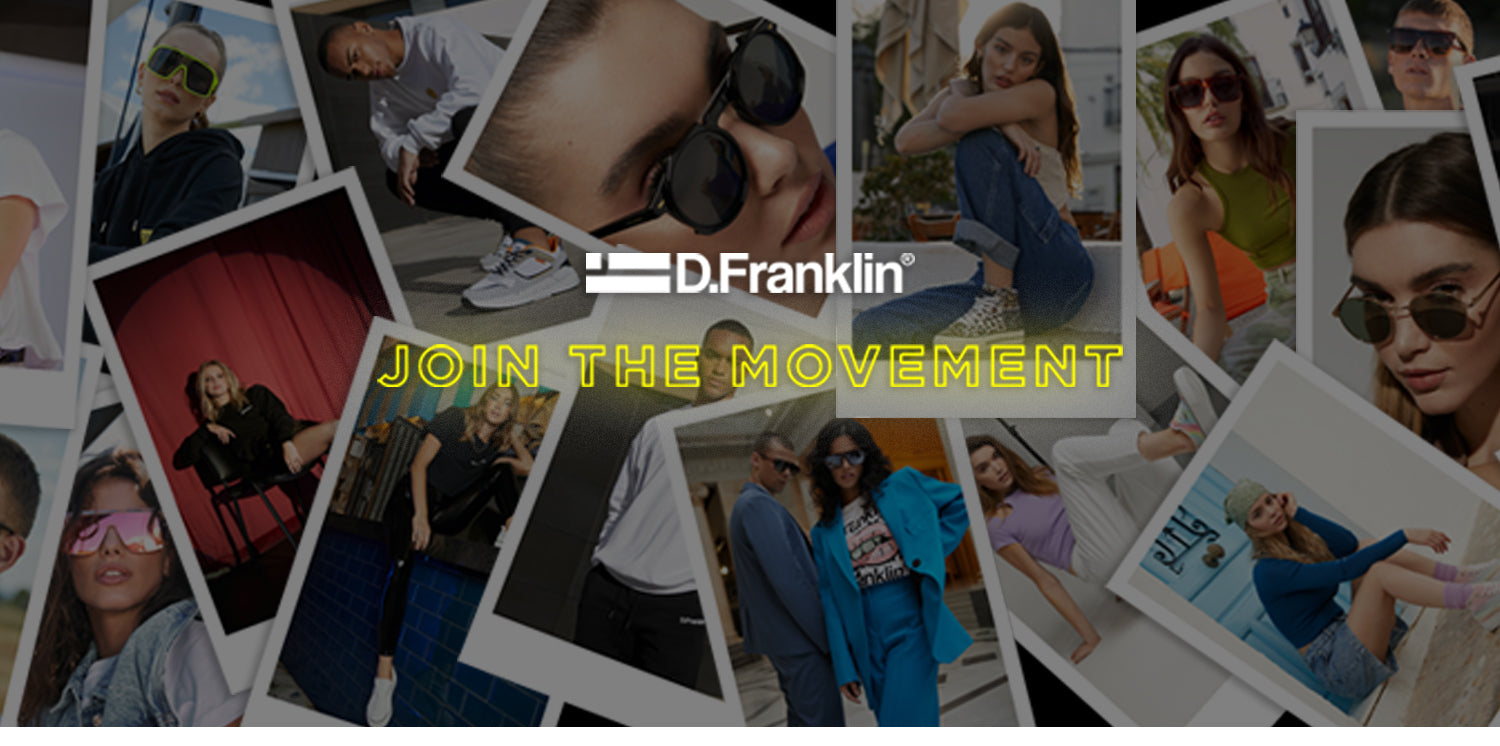Although sports glasses may look similar at first glance, there are models specifically designed for each sport.
Choosing the right type of sports glasses improves performance while protecting your vision and making you feel more comfortable in motion.
At D.Franklin, we specialize in designing high-quality glasses that combine functionality and aesthetics.
That’s why in this article we explain the main types of sports glasses, the features each one should have, and how to know which pair is right for your discipline.
Whether you’re a beginner or a seasoned athlete, this guide will help you understand exactly which glasses you need.
Why is it important to use the right sports glasses?
Sports glasses are a key element of technical apparel for every activity.
They are specifically designed to meet the physical demands of each sport—resisting speed, impact, light changes, sweat, dust, and wind. If you wear regular sunglasses to run or play padel, for example, they are likely to shift, fog up, or get damaged easily.
The eyes are highly sensitive to sunlight, dirt, and impact. That’s why sports glasses play a vital role in protection, stability, and visual performance.
Main Types of Sports Glasses by Sport
Even the most common models of sports glasses have unique features:
Running Glasses
-
Lightweight and secure to stay in place with every step.
-
Lenses, whether photochromic or polarized, are chosen depending on whether you run on roads or trails, helping avoid glare and adapt to light and shadows.
-
Wraparound design to protect against wind and airborne particles.
Running glasses are perfect for city and road running and also suitable for trail running and long-distance races.

Cycling Glasses
-
Wraparound frames for maximum coverage and aerodynamics.
-
Wide lenses with anti-glare treatments to prevent dazzling light on any route.
-
Enhanced ventilation to avoid fogging during climbs or humid weather.
Cycling glasses are ideal for road cycling, MTB, and gravel biking.

Padel and Tennis Glasses
-
Built to withstand fast balls and impacts.
-
Non-slip nose and temple pads for a secure fit.
-
Anti-reflective lenses are great for outdoor courts, and photochromic options work well in changing light conditions.
Tennis and padel glasses are also great for other outdoor racket sports.
Golf Glasses
-
Lenses that enhance contrast to better read the terrain.
-
UV protection without color distortion is essential for long hours in the sun.
-
Typically subtle but functional designs, offering comfort for long sessions and pairing well with both sporty and casual outfits.
Golf glasses are ideal for both amateur and professional golfers.
Water Sports Glasses
-
Often floating and equipped with retention straps.
-
Hydrophobic treatment is crucial to avoid water marks.
-
Designed to protect from sun, salt, and chlorine exposure.
These glasses are ideal for water-based activities like surfing, paddleboarding, kayaking, and sailing.
Ski and Snowboard Goggles
-
Offer a wide field of vision and interchangeable lenses for varying light conditions.
-
Inner foam allows helmet compatibility and insulation against the cold.
-
Built to resist impacts and low temperatures.
Ski and snow goggles are essential for winter and mountain sports.
Triathlon Glasses
-
Multifunctional glasses built to endure all three disciplines.
-
Lightweight, water-resistant, and with excellent grip.
-
Minimalist design for quick transitions between sports.
Triathlon glasses are perfect for athletes who do cross-training and multi-sport events.

Key Features of High-Quality Sports Glasses
While each type of sports glasses has unique characteristics, all quality models share some essential elements:
-
UV400 protection lenses: to safeguard eyes from harmful sun exposure.
-
Lightweight and durable materials: like TR90 or polycarbonate.
-
Ergonomic design: fits securely and comfortably without slipping.
-
Special treatments: anti-fog, anti-reflective, or hydrophobic coatings.
-
Accessory compatibility: such as helmets or sports caps.
These details make the difference between functional glasses and gear that may hinder your performance.
How to Choose Your Sports Glasses Step by Step
-
Based on your sport, since each activity has unique demands.
-
Considering the environment, whether you train outdoors, in the mountains, or indoors.
-
Using specific glasses, as multifunctional ones can’t fully replace those designed for each discipline.
In addition to knowing the different types of sports glasses, it’s essential to identify which pair suits your specific needs so you can enjoy your sport safely, comfortably, and with maximum performance. At D.Franklin, we offer a collection of glasses designed for athletes, made with the highest-quality materials and the design and style each sport demands.
Explore our categories and take the first step toward a safer and more professional sports experience.




